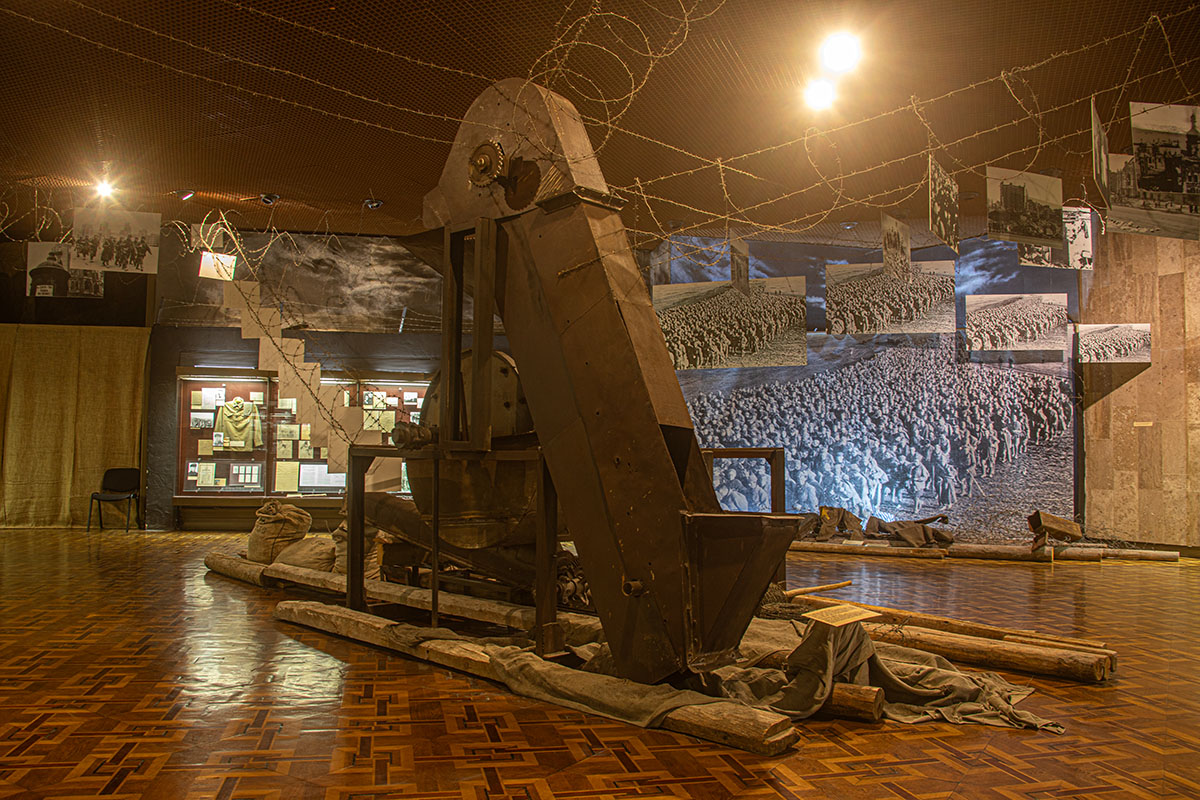Despite its terrible uniqueness, the “bone crusher” from the Yaniv concentration camp originally performed an ideological function in the exposition of the “Ukrainian State Museum of the History of the Great Patriotic War of 1941-1945”. It had to shock the visitor emotionally about the atrocities of the invaders against the Soviet people. The guidebooks of that time wrote: “The occupation policy of the Nazis reflected the true essence of fascism – bloody dictatorship of the monopoly capital. Like all kinds of aggressive and anti-human policies, it was doomed to fail and collapsed”. Over time, there were the opposing voices of those who adhered to the views of Holocaust revisionism. In the article “Lviv Bone Crusher” Ludwig Fanghenel noted: “Such doubtful “evidence” as the Lviv "bone crusher" is, at least, not suitable for substantiating the story of one hundred or even two hundred thousand Jews killed in the Yaniv camp. The bone crusher as well as the gloves made of “human skin” and the soap made of “human fat” are the Soviet military propaganda, which spread myths about German atrocities”.
Of course, both of these approaches devalued and distorted the true essence of the Shoah.
What is actually known. This is a drum-ball mill (German: Kugelmühlen) intended for construction work. Presumably, it was made in the 1860s–1880s. According to the evidences of former prisoners, in particular members of the “Sonderkommando 1005”, historians, criminologists and journalists it was used to crush the human bones during “operation 1005” in the Yaniv camp. It was a secret action by the Nazis with the involvement of prisoners in the work of exhuming and destroying corpses at the sites of mass murders so that to cover their tracks.
Since 1941 until 1943 the Nazi forced labor camp (Zwangsarbeitslager Lemberg–Janowska) in Lviv operated on St. Yanivska, 132–134 (now Shevchenko St.). It was originally intended for the detention and further extermination of the Jews of Galicia. Later, it was a transit camp for forced laborers on the construction of the strategic highway (German: Durchgangsstraße IV, Rollbahn Süd, Straße der SS), as well as for further transportation to the Belzec extermination camp (Poland). According to various estimates, from 50 to 200 thousand people were destroyed there.
The mill was probably involved in earthworks for road construction. However, there is no convincing evidence that it couldn’t be used in another way. On the contrary, the evidence collected today indicates the direct use of the mechanism in the implementation of the aforementioned operation.
It was the evidence in the interrogation of the “Extraordinary State Commission for the Establishment and Investigation of the Atrocities of the German Fascist Invaders”. It was presented by the Soviet prosecution at the international military tribunal in Nuremberg (Germany).




